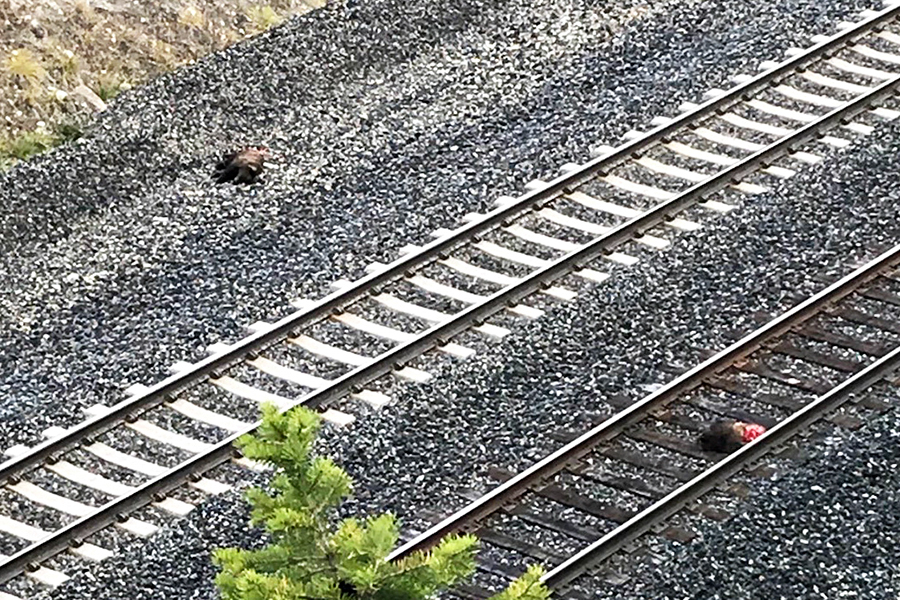Wildlife advocacy groups are threatening to sue BNSF Railway for its role in train collisions killing grizzly bears, a species protected under the Endangered Species Act.
According to state and federal wildlife agencies, eight grizzly bears were killed in 2019 as the result of train collisions, the most in a single year on record.
In the most recent example, a train killed two grizzly bear cubs near Whitefish on Oct. 15. In addition, five grizzly bears died earlier in October near East Glacier Park as a result of railway activities, according to a notice of intent to sue filed by WildEarth Guardians and Western Watersheds Project, which are represented by the Western Environmental Law Center.
In those deaths, a train struck and killed a cow, which then attracted the five bears to the tracks; in five separate incidents, two bears died in train collisions and three bears were killed by cars on U.S. Highway 2.
The spate of recent deaths prompted the groups to send BNSF a notice of its intent to sue. The company in turn has 60 days to respond.
“While Burlington Northern has twiddled its thumbs for 15 years rather than taking essential measures to protect grizzly bears, trains have killed dozens of grizzlies, including at least four cubs,” Sarah McMillan, conservation director at WildEarth Guardians, wrote in a statement. “This neglect, that has such lethal impact on protected bears, is simply unacceptable.”
The specter of a lawsuit targets BNSF’s railroad across northern Montana, which runs from eastern Montana, just south of Glacier National Park, and into Idaho.
According to data tracking bear deaths from 1980-2018, trains along BNSF railway corridors killed or contributed to the deaths of approximately 52 grizzly bears from the Northern Continental Divide Ecosystem.
Approximately 1.2-1.5 BNSF trains run per hour on these railways in Montana, averaging 35 miles per hour, according to the notice of intent. There is a slight increase in train frequency at twilight, when grizzly bears often feed, it states.
“The 67-mile stretch of railway between West Glacier and Browning is where trains reportedly killed 29 grizzlies between 1980 and 2002,” Pete Frost, an attorney at the Western Environmental Law Center, said. “Slowing the trains down, ensuring carrion are promptly cleared from tracks, and perhaps scheduling trains to run during the day and not at feeding time might reduce trains killing grizzlies.”
For its part, BNSF said it is working on a habitat conservation plan for grizzlies along its northern Montana train route.
Trains hitting bears have long been a problem in Northwest Montana, particularly in the 1980s and early 1990s, when a series of derailments left spilled grain along the right-of-way that attracted bears. In the 1990s, BNSF Railway predecessor Burlington Northern teamed up with FWP, the U.S. Fish and Wildlife Service, the National Park Service and other stakeholders to create the Great Northern Environmental Stewardship Area in an effort to reduce the number of train-related fatalities. The railroad increased its efforts to pick up spilled grain and to reduce vegetation along the tracks that might attract the animals.
Last year, trains near West Glacier and Columbia Falls struck and killed two male bears.
